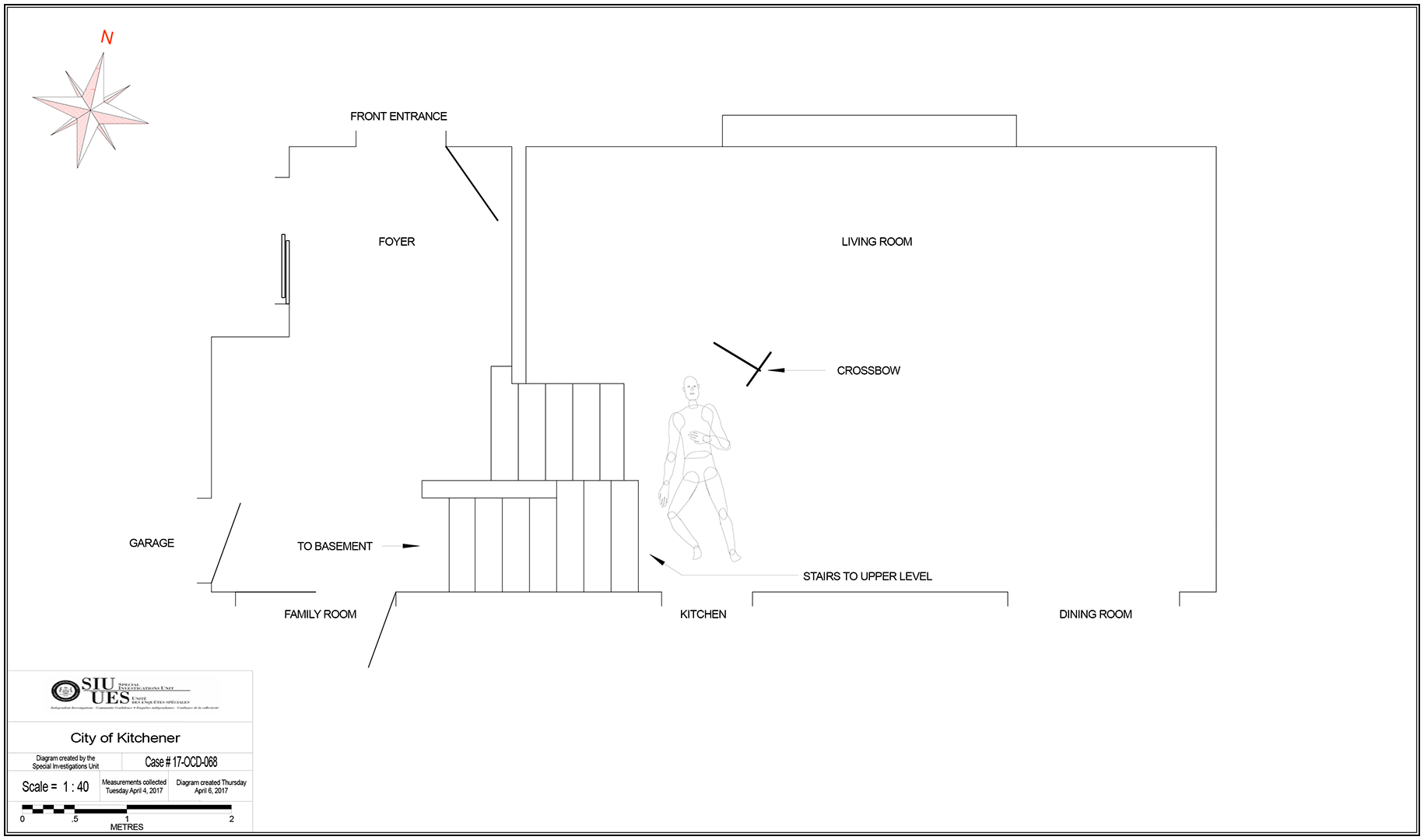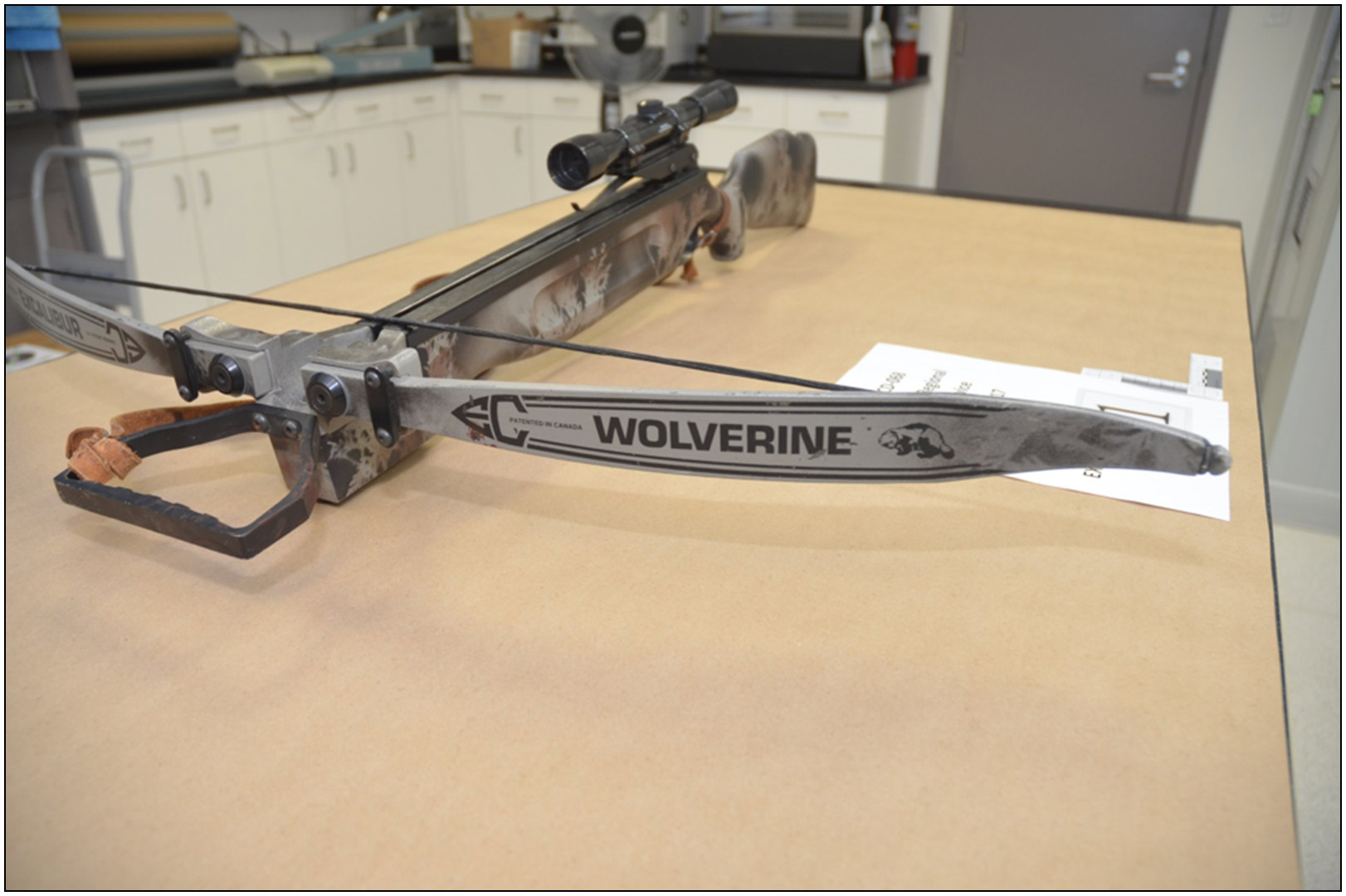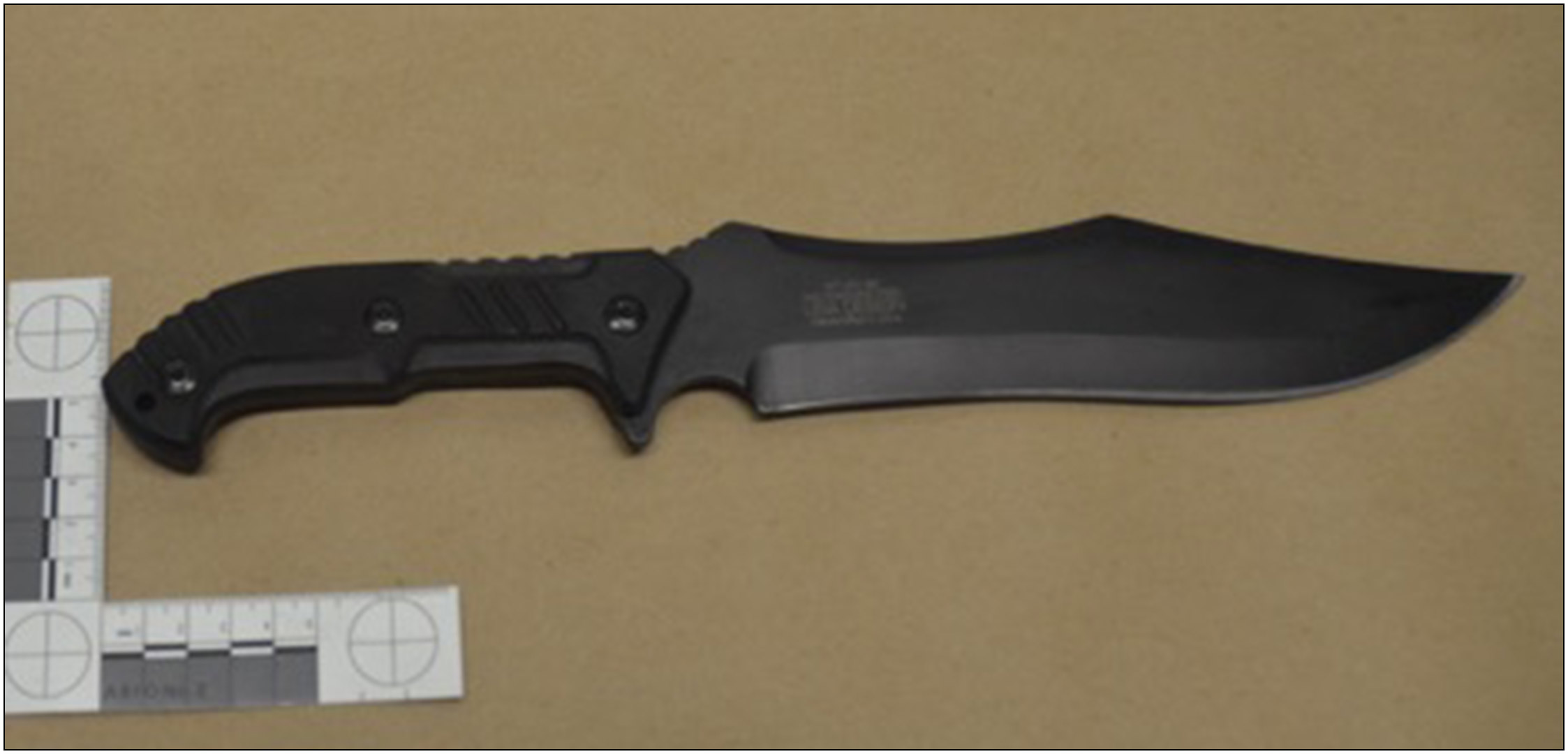SIU Director’s Report - Case # 17-OCD-068
Warning:
This page contains graphic content that can shock, offend and upset.
Contents:
Mandate of the SIU
The Special Investigations Unit is a civilian law enforcement agency that investigates incidents involving police officers where there has been death, serious injury or allegations of sexual assault. The Unit’s jurisdiction covers more than 50 municipal, regional and provincial police services across Ontario.
Under the Police Services Act, the Director of the SIU must determine based on the evidence gathered in an investigation whether an officer has committed a criminal offence in connection with the incident under investigation. If, after an investigation, there are reasonable grounds to believe that an offence was committed, the Director has the authority to lay a criminal charge against the officer. Alternatively, in all cases where no reasonable grounds exist, the Director does not lay criminal charges but files a report with the Attorney General communicating the results of an investigation.
Information restrictions
Freedom of Information and Protection of Personal Privacy Act (“FIPPAâ€)
Pursuant to section 14 of FIPPA (i.e., law enforcement), certain information may not be included in this report. This information may include, but is not limited to, the following:
- Confidential investigative techniques and procedures used by law enforcement agencies; and
- Information whose release could reasonably be expected to interfere with a law enforcement matter or an investigation undertaken with a view to a law enforcement proceeding.
Pursuant to section 21 of FIPPA (i.e., personal privacy), protected personal information is not included in this document. This information may include, but is not limited to, the following:
- subject officer name(s)
- witness officer name(s)
- civilian witness name(s)
- location information
- witness statements and evidence gathered in the course of the investigation provided to the SIU in confidence and
- other identifiers which are likely to reveal personal information about individuals involved in the investigation
Personal Health Information Protection Act, 2004 (“PHIPAâ€)
Pursuant to PHIPA, any information related to the personal health of identifiable individuals is not included.
Other proceedings, processes, and investigations
Information may have also been excluded from this report because its release could undermine the integrity of other proceedings involving the same incident, such as criminal proceedings, coroner’s inquests, other public proceedings and/or other law enforcement investigations.
Mandate engaged
The Unit’s investigative jurisdiction is limited to those incidents where there is a serious injury (including sexual assault allegations) or death in cases involving the police.
“Serious injuries†shall include those that are likely to interfere with the health or comfort of the victim and are more than merely transient or trifling in nature and will include serious injury resulting from sexual assault. “Serious Injury†shall initially be presumed when the victim is admitted to hospital, suffers a fracture to a limb, rib or vertebrae or to the skull, suffers burns to a major portion of the body or loses any portion of the body or suffers loss of vision or hearing, or alleges sexual assault. Where a prolonged delay is likely before the seriousness of the injury can be assessed, the Unit should be notified so that it can monitor the situation and decide on the extent of its involvement.
This report relates to the SIU’s investigation into the death of a 69-year-old man in his home on April 4, 2017.
The investigation
Notification of the SIU
On April 4, 2017 at 10:15 a.m., Waterloo Regional Police Service (WRPS) notified the SIU of the death of a 69-year-old man (the Complainant) in his home in Kitchener, after a prolonged standoff.
WRPS reported that at 4:08 a.m. on April 4, 2017, WRPS was called by Civilian Witness (CW) #1 who advised that the Complainant had awoken her and ordered her to flee for her life from their home. CW #1 further reported that the Complainant had been suffering from mental health issues and numerous firearms were stored in the home.
Police responded to the residence and set up a perimeter. Police entered the residence (exact time unknown) and found a male deceased inside. Injury type unknown at this time.
The team
Number of SIU Investigators assigned: 4
Number of SIU Forensic Investigators assigned: 2
SIU Forensic Investigators responded to the scene and identified and preserved evidence. They documented the scene associated with the incident by way of notes, photography, sketches and measurements. The Forensic Investigators attended and recorded the post-mortem examination and assisted in making submissions to the Centre of Forensic Sciences.
Complainant
69-year-old male, deceased
Civilian witnesses
CWÂ #1 Interviewed
CWÂ #2 Interviewed
CWÂ #3 Interviewed
CWÂ #4 Interviewed
CWÂ #5 Interviewed
CWÂ #6 Interviewed
CWÂ #7 Interviewed
CWÂ #8 Interviewed
CWÂ #9 Interviewed
Witness officers
WOÂ #1 Interviewed
WOÂ #2 Interviewed
WOÂ #3 Interviewed
Subject officers
SO Declined interview, as is the subject officer’s legal right. Notes received and reviewed.
Incident narrative
On April 3, 2017, CW #1 called WRPS concerned about the Complainant’s increasing paranoia. Officers attended the residence and determined that there were no grounds to apprehend the Complainant. The attending officers advised CW #1 to take the Complainant to see his doctor. CW #1 took the Complainant to the hospital later that day. The Complainant was prescribed sleeping medication, and returned home with CW #1.
During the early morning hours of April 4, 2017, the Complainant woke CW #1, and told her to leave immediately and run for her life, which she did. Once outside the residence, CW #1 called 911 and reported that the Complainant was inside the residence with an extensive collection of firearms and was suffering from paranoia.
WRPS officers responded to the home within minutes. The SO was the Incident Commander. After several hours outside the residence, attempting to make contact with the Complainant and placing mobile scout robots (Scouts) inside the home, officers located the Complainant lying on the living room floor, with a knife and a crossbow arrow protruding from his chest. He was declared dead at the scene.
Evidence
The scene
The body of the Complainant was found on the living room floor. The living room was accessed by ascending five stairs directly to the left of the foyer as one enters the home. Most areas of the home were littered with debris and household items, indicative of the house having been ransacked.
Scene diagram

Physical evidence
Below are photos of the Wolverine Crossbow and the knife used by the Complainant:


Expert evidence
A post-mortem examination of the Complainant was undertaken at a Hamilton hospital on April 5, 2017, by a forensic pathologist. The immediate cause of death was penetrating wounds to the chest by knife and arrow.
On May 26, 2017, the SIU lead investigator spoke to the Regional Coroner who pronounced death. Although his report was not completed at the time, he indicated that his findings will result in the death being listed as suicide. The final report of post-mortem examination dated November 9, 2017, and received by the SIU on January 23, 2018, indicated that the cause of death was penetrating stab wounds of the thorax and abdomen.[1]
Video/audio/photographic evidence
The SIU canvassed the area for any video or audio recordings, and photographic evidence, but was not able to locate any.
Materials obtained from Police Service
Upon request the SIU obtained and reviewed the following materials and documents from WRPS:
- Civilian Witness List
- Communications recordings
- Notes of WOÂ #1, WOÂ #2 and WOÂ #3
- Occurrence Details reports (April 3 and April 4, 2017)
- Patrol Officer Witness List
- Procedure - Crisis Negotiation
- Procedure - Major Incident Command
- Procedure Emergency Response and Hostage Rescue
- Special Response Officer Witness List
- WRPS Negotiations Call (audio), and
- WRPS Interview Summary – CW #1
Relevant legislation
Section 17, Mental Health Act - Action by police officer
17 Where a police officer has reasonable and probable grounds to believe that a person is acting or has acted in a disorderly manner and has reasonable cause to believe that the person,
- has threatened or attempted or is threatening or attempting to cause bodily harm to himself or herself
- has behaved or is behaving violently towards another person or has caused or is causing another person to fear bodily harm from him or her; or
- has shown or is showing a lack of competence to care for himself or herself
and in addition the police officer is of the opinion that the person is apparently suffering from mental disorder of a nature or quality that likely will result in,
- serious bodily harm to the person
- serious bodily harm to another person; or
- serious physical impairment of the person
and that it would be dangerous to proceed under section 16, the police officer may take the person in custody to an appropriate place for examination by a physician.
Analysis and director’s decision
On April 4th, 2017, at approximately 4:00 a.m., CW #1 was awakened by the Complainant who told her to run for her life. CW #1 fled the house. CW #1 then contacted WRPS by way of a 911 call at 4:08 a.m. and advised them of what had just occurred. She also indicated that the Complainant had approximately 30 rifles in his house in the City of Kitchener, along with a couple of crossbows, but that they were all locked up and she thought that he had given the key to his friend to hold. CW #1 advised that the Complainant had been under a considerable amount of stress and was suffering some paranoid ideation as a result. She also advised that the police had attended the Complainant’s home the previous day and had checked out the gun cabinets to ensure that his rifles were properly secured and the police left the premises after the Complainant assured them that he was going to see his doctor. After the visit from police, CW #1 called the Complainant’s family doctor and, on her advice, she and the Complainant had attended at the hospital due to his irrational behaviour, where he was not admitted but was given something to help him sleep and they returned to his home. Police attended within minutes of CW #1 making the 911 call and while she was still speaking with the dispatcher.
In response to the 911 call, numerous members of the Emergency Response Unit (ERU), the Tactical Rescue Unit (TRU) and a canine (K9) unit were all called in from home while off-duty to deal with this situation and attended at the residence. At 9:59 a.m., the Complainant’s body was seen in his home and police entered and discovered him dead on the living room floor. There is no dispute as to the facts.
At 5:06 a.m., the SO was called in from his home to be the Incident Commander for the incident at the Complainant’s home and assigned uniform patrol officers to contain the area. At 5:20 a.m., a non-designated officer knocked on the door of CW #2, a neighbour of the Complainant’s, and asked CW #2 if he had the keys to the Complainant’s gun cabinets, which he confirmed that he did. At 5:30 a.m., WO #2, the ERU supervisor, was also called in from his home. The information received at that time was that the Complainant had barricaded himself inside his home, that he was suffering from a mental disorder and that he had access to numerous firearms and had ordered CW #1 to leave the residence. WO #2 arrived at the scene in the command van at 6:06 a.m. and they immediately tried to establish contact with the Complainant both by telephone and verbal call outs. At no time did the Complainant respond.
The TRU then arrived on scene and parked in front of the residence to provide protection from gun fire to the police officers on scene.
The SO arrived at the scene at 6:50Â a.m. and advised that his mission was to apprehend the Complainant under the authority of the Mental Health Act (MHA) by using the least amount of force necessary, taking into consideration the safety of the public, the police and the Complainant.
At 7:17Â a.m., area schools were notified and occupants of neighbouring homes were contacted and told to stay indoors - those who had to leave were escorted by police officers. CWÂ #3 was provided security by a police officer in case the Complainant had already fled the residence and was intent on doing her harm.[2]
At 7:34Â a.m., the SO ordered the front door breached by police officers who then retreated to the command post and continued to call out to the Complainant. At 7:47Â a.m., the SO ordered the garage windows breached and the garage was cleared. Officers continued to try to make cell phone contact with the Complainant.
At 7:50 a.m., the ERU moved to the front door and forced it open with a metal ram. They then yelled out “Regional Police, pick up the telephone†and then moved back to the cover of the TRU, where a loudspeaker was unsuccessfully used to attempt to get the Complainant’s attention, again without response.
At 8:00Â a.m., a Scout was deployed inside the house but had its mobility hindered by the amount of debris scattered about and being used to barricade the front door.
At 8:27Â a.m., a second Scout was deposited into the basement. It, too, was hindered by the amount of articles blocking its path.
At 8:48Â a.m., it was decided that the basement windows would be breached and numerous call outs were made to the Complainant with no response. Officers reported that an empty rifle case had been seen on the basement floor and there was concern that all firearms might not be in the gun cabinets and may not be accounted for, which would leave the Complainant with possible access to a firearm. At 8:57Â a.m., the team retreated to a safe location.
At 9:32Â a.m., the front window was breached and another Scout was deployed into the living room and the Scout picked up the view of a crossbow equipped with a scope lying on the floor. Again the Scout had difficulty maneuvering due to the amount of debris on the floor. WOÂ #1, the K9 officer, then set up on the front porch of a neighbouring house and took over control of the Scout.
At 9:55Â a.m., the basement was saturated with Oleoresin capsicum (OC or pepper) spray in order to flush the Complainant out, should he be in that area.
At 9:58Â a.m., WOÂ #1 was able to maneuver the Scout backwards and was able to observe the Complainant lying on the floor, apparently unconscious, with something sticking out of his chest. WOÂ #3 and a non-designated officer then stood on top of a black tool box which had been positioned below the front bay window and were able to observe the Complainant lying on his back on the living room floor with a black knife and an arrow sticking out of his chest.
At 10:04Â a.m., the ERU put on their gas masks, entered the residence and were able to confirm that the Complainant was deceased. A crossbow was found lying directly to the left of the Complainant. Emergency Medical Services (EMS) attended at 10:08Â a.m. and declared the Complainant obviously deceased and already having entered stages of lividity and rigor mortis, indicating that some time had elapsed since his death. Police also located a note from the Complainant which could be interpreted as a suicide note.
A subsequent post mortem determined the cause of death as a suicide with the mechanism being penetrating wounds to the chest by knife and arrow.
It is clear, on a review of all of the evidence, that the Complainant, possibly due to his paranoid state, felt compelled to take his own life. We cannot know what the Complainant’s intentions were when he told CW #1 to run for her life and barricaded himself in his home, but the senior officers tasked with commanding a team of police officers to bring this incident to an end could not take a risk that the Complainant may have accessed his firearms and either wanted to engage police in a fire fight or end the lives of others when he ended his own. It is clear that the Complainant took his own life without any intervention by police. It would be speculative to assume, had police acted with less caution and more quickly, that his life could have been saved at the risk of the loss of other human life. In fact, it is unclear as to when exactly the Complainant took his own life, but the presence of lividity and rigor mortis certainly points to the possibility that the Complainant ended his life either before the police had ever even come on the scene, or shortly thereafter. The SO, who was tasked with this incident, followed all procedures as set out in the WRPS Crisis Negotiation, Emergency Response and Hostage Rescue and Major Incident Command policy guidelines and attempted to apprehend the Complainant under the MHA with the least amount of force necessary while simultaneously ensuring the safety of all involved. In all, 27 police officers were deployed to attempt to safely apprehend the Complainant. Despite the tragic loss of life, no police officer at any point was ever successful in either making verbal or physical contact with the Complainant and they cannot be held responsible for his actions in fulfilling his intention to end his own life. As such, there are no reasonable grounds here for the laying of criminal charges.
Date: January 31, 2018
Original signed by
Tony Loparco
Director
Special Investigations Unit
Endnotes
- 1) [1] The autopsy photos clearly show that the cross bow arrow and the knife penetrated the Complainant’s chest. [Back to text]
- 2) [2] The Complainant and CW #3 had been arguing about ownership of certain property for some time. [Back to text]
Note:
The signed English original report is authoritative, and any discrepancy between that report and the French and English online versions should be resolved in favour of the original English report.
